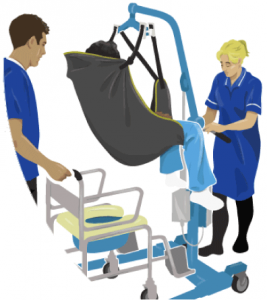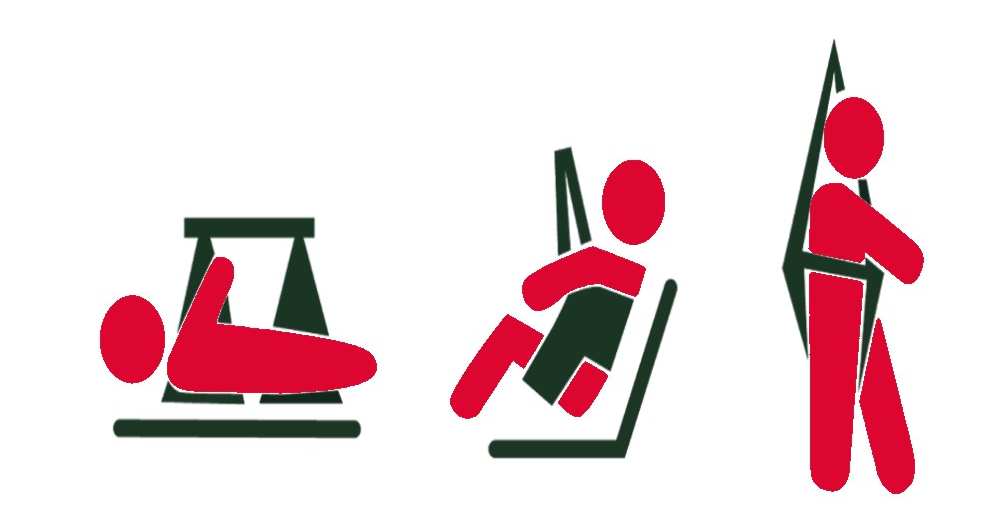Maintaining Your Safe Patient Handling Equipment

To better serve our customers and help them maintain their safe patient handling program we offer patient lift inspections and maintenance. We help to ensure your patient handling equipment is safe for use. Our annual inspections make sure your patient handling equipment is up to the manufacturer’s standards. Annual inspections help keep your patient lifting equipment operating safely, eliminate or minimize down time, and avoid expensive emergency service calls. SMI services all of Minnesota.
The manufacturer has built in many safety features that we maintain to the manufacturer’s specification levels. A trained and qualified technician performs the annual inspection with specialized testing equipment and will examine your patient lifting equipment by following the manufacturer’s 25 to 40 written points of the equipment’s inspection list. It doesn’t matter the make of the safe patient handling/lifting equipment, whether your facility uses an overhead ceiling lift, Hoyer lifts, slings, EZ-Stand, mechanical or manual patient lifts, sit-to-stands, etc. we will ensure it is safe for use. For example, we ensure that the track/rail is as well anchored and tightly secured as the day it was installed. We also check the battery performance, the charging system, safety limit switches, and condition of all parts. We grease and clean any parts as needed. Our technicians inform you if there are any problems and replace parts only with your permission.
Annual Inspections of Your Safe Patient Handling Equipment

The importance of routine patient lift inspections and maintenance can not be overstated. Safe patient handling medical equipment such as ceiling lift systems and other patient transfer devices, pool lifts, Hoyer style lifts, sit-to-stands, chair lifts for stairs and platform lifts for group homes, day programs and care centers get a lot of use, a lot more use than your average residential home installation. When you combine heavy use with this complex equipment with many moving parts, breakdowns and problems with the equipment are almost unavoidable.
To help address these issues, SMI offers patient lift inspections and maintenance for all your safe patient moving/lifting equipment at your facility. Assuring that all the medical equipment performs well and works safely for all residents and participants in your safe patient handling program.
Southern Minnesota Inspection has been in business since 2003. With 17 years of experience, SMI knows where the problem areas within this equipment may be and, when combined with carefully following the manufacturer’s inspection list, can uncover and resolve potential issues before the result in an equipment breakdown.
Benefits:
• Keeps the equipment operating safely.
• Eliminates or minimizes equipment downtime.
• Routine maintenance avoids expensive emergency service calls.
• Assures that the equipment can handle the rapid transfer of patients in the event of an emergency evacuation.
Full Inspection checklist for a patient lift typically includes:
Portable Full Body & Sit to Stand Units
- Base and Casters
- Ensure that base is level
- Ensure that caster mounting bolts and axle bolts are tight
- Ensure that casters swivel, roll freely & lock
- Ensure all welds are intact
- Base Adjustments
- Ensure that base opens and closes smoothly
- Ensure that base locks securely in all positions
- Ensure that locking knob is in place and operation properly
- Inspect all base hardware for wear
- Mast
- Ensure that mast is fully engaged and locked into mast sleeve
- Inspect mast for bends or defections
- Inspect all mast hardware for wear
- Ensure all welds are intact
- Boom
- Inspect boom for bends or defections
- Ensure that boom is centered between the base legs
- Inspect all boom hardware for wear
- Ensure all welds are intact
- Spreader Bar
- Inspect hanger post for wear or damage
- Inspect sling hook for wear or defections
- Inspect all spreader bar hardware for wear
- Slings
- Inspect slings and straps for wear, tears, cuts, frays
- Inspect metal/plastic parts for wear or damage
- Lubrication (where applicable)
- Check that top and bottom actuator mounting are lubricated
- Check that pivot points are lubricated
- Pump (where applicable)
- Ensure that pump mounting hardware is tight
- Inspect pump mounting hardware for wear
- Electronics and Actuator (where applicable)
- Check that battery is fully charged
- Inspect for proper up/down operation, complete range of motion
- Ensure emergency down & stop are functioning
- Ensure scale display functions
- Test all functions on handset
- Check limit switches
- Ensure that mounting hardware is tight
- Inspect mounting hardware for wear
- Load Testing
- OPIONAL – 100%-125% of capacity depending on OEM requirements
Ceiling Units
- Track
- All track, end stops, end caps, track joints, gate assemblies, turntables, ceiling brackets are in place & tight
- Checking all support attachment/brace points
- Inspect for wear, bends or defections
- Lift Unit
- Ensure unit charges properly
- Inspect trolley components
- Inspect sling hook for wear or defections
- Inspect all spreader bar hardware for wear
- Check limit switches
- Ensure lifting tape/strap has no wear
- Ensure stitching on lifting tape near lifting bar has no wear
- Test all functions on handset
- Electronics
- Check that battery is fully charged
- Inspect for proper up/down operation
- Ensure emergency down & stop are functioning
- Ensure scale display functions
- Slings
- Inspect slings and straps for wear, tears, cuts, frays
- Inspect metal/plastic parts for wear or damage
- Load Testing
- OPTIONAL – 100%-125% of capacity depending on OEM requirements
Visit these popular pages:


